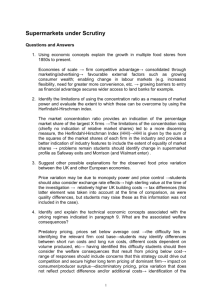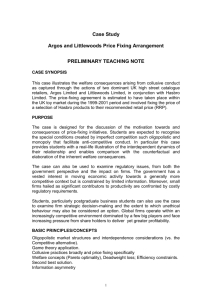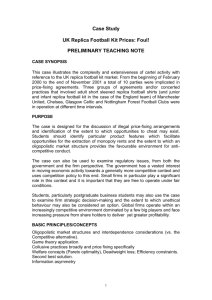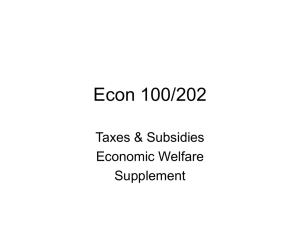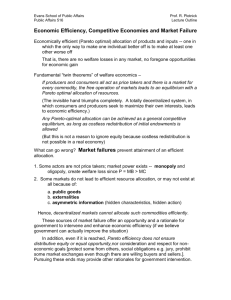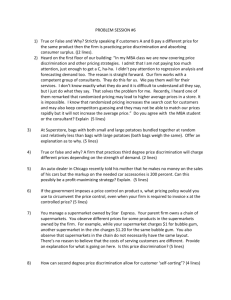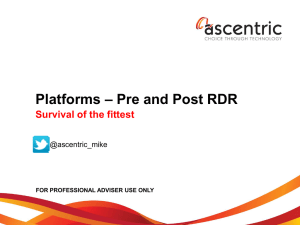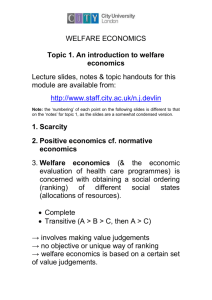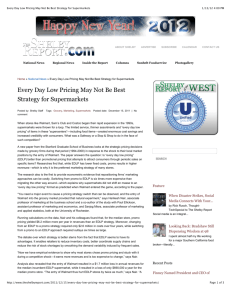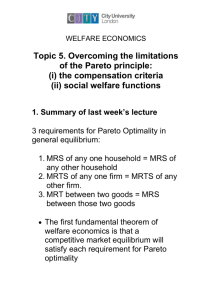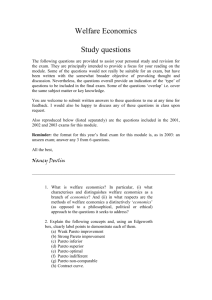Case Study Supermarkets under scrutiny: Competition Policy inaction?
advertisement
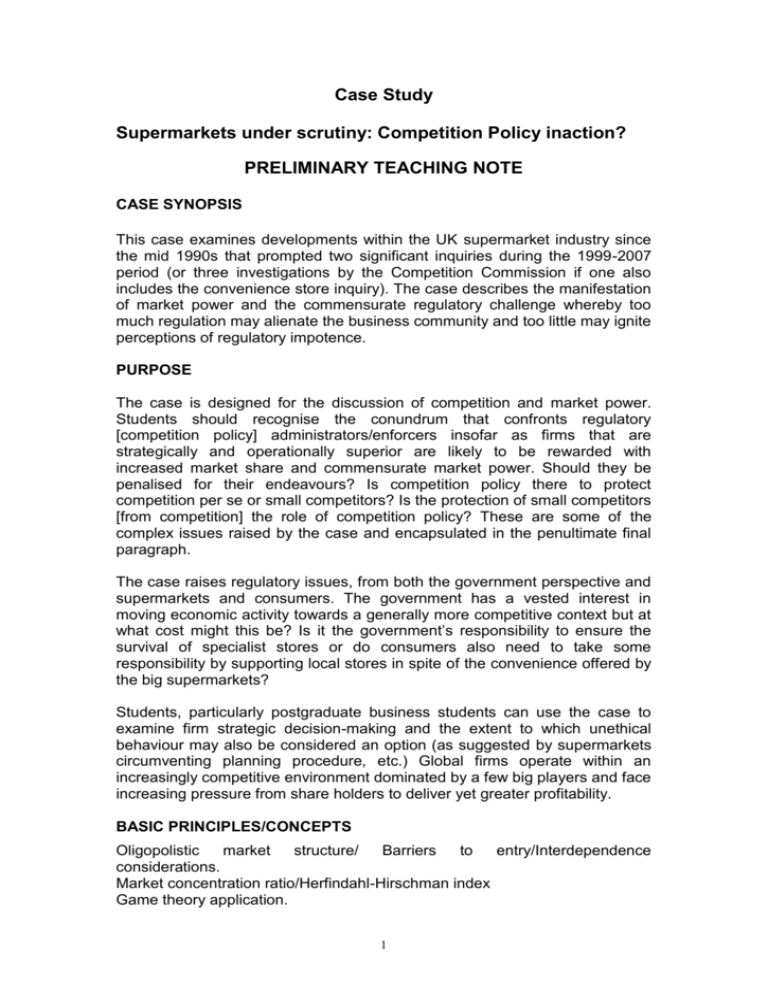
Case Study Supermarkets under scrutiny: Competition Policy inaction? PRELIMINARY TEACHING NOTE CASE SYNOPSIS This case examines developments within the UK supermarket industry since the mid 1990s that prompted two significant inquiries during the 1999-2007 period (or three investigations by the Competition Commission if one also includes the convenience store inquiry). The case describes the manifestation of market power and the commensurate regulatory challenge whereby too much regulation may alienate the business community and too little may ignite perceptions of regulatory impotence. PURPOSE The case is designed for the discussion of competition and market power. Students should recognise the conundrum that confronts regulatory [competition policy] administrators/enforcers insofar as firms that are strategically and operationally superior are likely to be rewarded with increased market share and commensurate market power. Should they be penalised for their endeavours? Is competition policy there to protect competition per se or small competitors? Is the protection of small competitors [from competition] the role of competition policy? These are some of the complex issues raised by the case and encapsulated in the penultimate final paragraph. The case raises regulatory issues, from both the government perspective and supermarkets and consumers. The government has a vested interest in moving economic activity towards a generally more competitive context but at what cost might this be? Is it the government’s responsibility to ensure the survival of specialist stores or do consumers also need to take some responsibility by supporting local stores in spite of the convenience offered by the big supermarkets? Students, particularly postgraduate business students can use the case to examine firm strategic decision-making and the extent to which unethical behaviour may also be considered an option (as suggested by supermarkets circumventing planning procedure, etc.) Global firms operate within an increasingly competitive environment dominated by a few big players and face increasing pressure from share holders to deliver yet greater profitability. BASIC PRINCIPLES/CONCEPTS Oligopolistic market structure/ Barriers to entry/Interdependence considerations. Market concentration ratio/Herfindahl-Hirschman index Game theory application. 1 Predatory pricing/Price discrimination Welfare concepts (Pareto optimality). Coase Theorem. Contribution of Adam Smith; Hayek, Sen, Schumpeter, etc. 2 TEACHING METHODS The case is written primarily for advanced/intermediate (second/third year) economics majors but could also be used on an introductory economics programme of a postgraduate course. It is expected that students would already have covered/been introduced to the range of market structures (perfect competition through to monopoly) and students would be able to compare and contrast the different efficiency/welfare outcomes associated with each market structure. The case is designed to be discussed in one class session of approximately one and a half to two hours duration. Dependent on the class background a varying mix of the end of case questions can be used, it is not anticipated that necessarily all questions will be used during one session. For example, economics majors would benefit from a mix of questions that address pricing, welfare and structural issues such as questions, 3-5 and also 7. By contrast business students will have a greater interest in strategy and issues of market access as suggested through questions 1,2 and 6. Three questions (or four if less detailed) should be sufficient based on small groups reporting back during a plenary session. The case questions have been devised to accurately reflect the divergent economic competence of the two groups such that advanced economic undergraduate students would be able to discriminate between different measures of market power and develop further on welfare consequences beyond the acknowledgement of price/output to include deadweight loss and pareto optimal concepts. The case provides students with the opportunity to develop their analytical skills with respect to the application of theoretical economic concepts and to the consideration of regulatory issues. 3 TEACHING GUIDE SUMMARY Concepts: Learning points: 1. Oligopolistic market structures. 2. Exercise of Market power 3. Welfare considerations 4. Economic regulation 4 Industry dominance by a small number of large firms Interdependence constraint on behaviour. Barriers to entry and abnormal profits Kinked demand curve* Game theory strategic analysis Prisoner’s dilemma Pricing strategy: predatory pricing; price discrimination Short term gain of lower prices Potential for long run higher prices and less choice. Divergence from pareto optimal outcome.* Distributional concerns, shifting of consumer surplus to producer surplus* Explanation of deadweight loss. Information asymmetry and the difficulties of regulation. Problems of over/under regulation and the business consequences, e.g. disincentive effects, small business increased costs. Explanation of regulatory capture.
